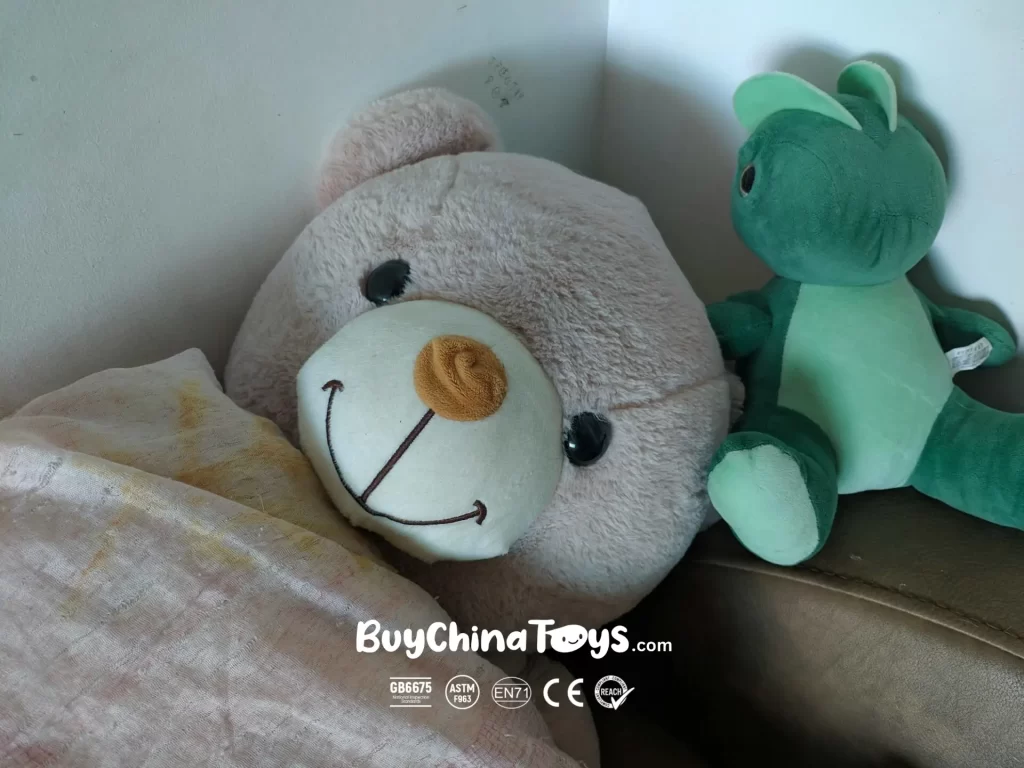Plush dolls, or soft toys, are a very popular product worldwide. Plush toys appeal to children and adult collectors because of their smooth texture, attractive shape, and comfortable touch. The key to a quality plush doll is the choice of soft plush materials. This material determines how soft, safe, and durable a plush is. By understanding the types of plush materials, consumers can choose the right product for their needs, whether for their personal collection or as a gift for a loved one.
Contents
Types of Soft Plush Materials
There are several primary materials often used in plush making. Each material has unique characteristics, including softness, strength, and durability. Each type of soft plush material has advantages and disadvantages that should be understood before choosing. Some popular materials include:
Velboa
Velboa is one of the most commonly used plush fabrics. Its texture is smooth, soft, and has a light sheen. Velboa is also relatively affordable compared to other materials, making it often used in mid-priced plush dolls. The advantages are affordability, durability, and easy cleaning. The disadvantages are that it’s not as soft as minky, making it less suitable for baby plush.
Minky
Minky is known for its extraordinary softness. Its texture is thick, smooth, and very comfortable to the touch. Due to its premium quality, minky plush is usually sold at a higher price. The advantages of this type of material are that it is very soft, comfortable, and gives a premium feel. The disadvantages are that it is relatively expensive and requires extra care to maintain its texture.
Premium Cotton
Cotton is used to produce plushes that are durable. Besides being soft, cotton has advantages in air circulation and color absorption, giving the plush a more natural appearance. The benefits of this material are that it is skin-friendly, safe, and durable. The disadvantages are that cotton fabric wrinkles easily and doesn’t always provide the same soft feel as minky.
Faux Fur
Faux fur is often used for large plush or plush animals that require a realistic fur effect. Its texture is soft, but it needs more care to prevent wrinkles. It also has a realistic and luxurious appearance. The disadvantages are that cleaning is difficult and can clump if not cared for properly.
Polyester Fleece
Polyester fleece is a versatile material that is soft yet lightweight. It is typically used as an inner lining or for simple plush. It is lightweight, smooth, and flexible. The downside is that it can easily thin after prolonged use.
By understanding these advantages and disadvantages, consumers can choose plush materials that suit their needs and budget.
The Best Materials for Children
Safety and comfort must be prioritized when plush toys are intended for children. Materials like minky and premium cotton are the best choices. Soft minky plush materials are incredibly soft and safe for children’s sensitive skin, while premium cotton ensures the plush remains comfortable and durable.
In addition to the outer material, the plush filling also plays a crucial role. Hypoallergenic polyester fiber is typically used to ensure the plush is soft, non-clumping, and safe for babies and toddlers. High-quality plush toys are always made from materials free of harmful chemicals, so parents can rest assured when their children play with or cuddle the plush toys.
Using plush toys made from premium materials offers many benefits. Besides being durable, they are safer for children and more comfortable. Aesthetically, premium plush toys are more beautiful and have more precise details. No wonder minky or premium cotton plush toys are often chosen as special gifts or personal collections.
Premium products also have a higher resale value, making them ideal for businesses offering superior products. Companies can build a good reputation while increasing customer satisfaction by providing plush toys from the best soft plush materials.
How to Differentiate High-Quality Plush from Low-Quality
Many people have difficulty distinguishing high-quality plush from low-quality ones. However, there are several simple indicators to look for. Plush made from the best soft plush materials typically has a smooth texture, fibers that don’t shed easily, and neat and strong stitching. The plush’s shape is also proportional and doesn’t change easily even after long-term use.
Conversely, plush made from low-quality materials tends to feel rough, have loose stitching, and colors fade quickly after several washes. Cheap plush filling often clumps, making the doll look unattractive. Consumers can distinguish premium plush products from cheap ones with a bit of care.
The quality of plush dolls depends heavily on the material chosen. Soft plush materials such as velboa, minky, premium cotton, faux fur, and polyester fleece have advantages. Minky and premium cotton are the safest and most comfortable choices for children. Plush made from high-quality materials can be identified by their soft texture, neat stitching, and durable, proportional shape.
By understanding the types of plush materials and their differences in quality, consumers can make more informed decisions. If you want a plush toy that’s soft, safe, and durable, be sure to choose one made with the best soft materials. Premium plush provides comfort, enhances aesthetics, and provides a fun play experience.
Choosing a plush toy made with soft plush materials from Buy China Toys is right for anyone who prioritizes comfort, safety, and the highest quality. We offer a wide selection of plush toys with attractive designs, soft materials, and international production standards that ensure each product is safe for use, even for children. With our extensive experience and commitment to quality, we always prioritize details, from selecting premium materials and meticulous stitching to stunning finishing. This makes each plush toy more than just a toy; it is also a cherished gift and a valuable collectible.

